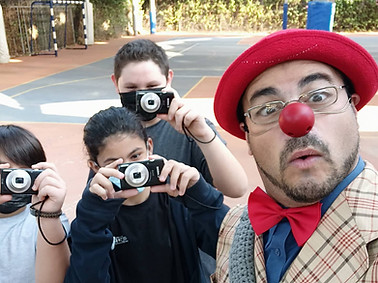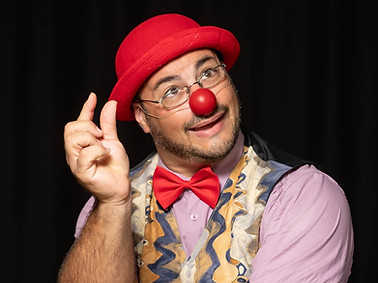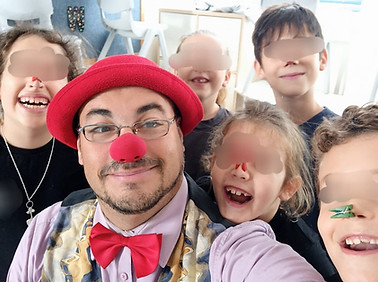
Educational Clowning
An educational clown is much more than a clown at school: it is a learning facilitator, a bridge between knowledge and emotion. Through humor, play, and creativity, the clown creates a safe and dynamic space that enhances curiosity, self-expression, and the connection between students and teachers.

What does educational clowning bring?
Meaningful learning: transforms complex content into engaging experiences, connecting academic knowledge with everyday life.
Non-verbal communication: encourages children and youth to express themselves through body language, gestures, and eye contact, developing new ways of communication.
Emotional well-being: helps students embrace their emotions and use humor as a positive tool.
Creativity and dynamism: breaks the routine and brings fresh energy to the school environment.
Where do we work?
In schools, educational centers, and community projects, closely collaborating with teachers and staff to adapt to the specific needs of each group.


Training and approach
Educational clowns combine clowning, improvisation, and acting techniques with pedagogical and therapeutic foundations. This training allows them to connect with diverse audiences, manage group energy, and transform the classroom into a more inclusive, safe, and creative space.
Benefits for the educational community
-
Stronger connections between students and educators.
-
A more inclusive and welcoming school environment.
-
Creative tools that open new doors for learning.

My name is Ignacio Grinstein. I work as an educational clown in schools and projects, and I am also a trainer in this technique, teaching educators, artists, and professionals how to integrate educational clowning into their practice.
If you work in the field of education and would like to explore how educational clowning can bring value to your school or institution, get in touch with me to collaborate and create projects together.




